
Nuclear Magnetic Resonance
The nuclear magnetic resonance (NMR) facility offers both equipment and knowledge to aid the identification, quantification, and structural determination of a wide array of chemical compounds. Its instruments can be used to determine the structure, molecular weight, and purity of organic and inorganic chemical compounds and polymers. Furthermore, the facility has extensive experience in the metabolomic analysis of human biofluid and tissue samples, as well as the analysis of cells, culture media, tissues, and biofluids from model animals. NMR can also be used to analyze other characteristics such as food composition or the metabolic profile of plants. Furthermore, NMR allows the structure and molecular weight of peptides, proteins, DNA, and RNA to be determined, and interaction studies between receptor macromolecules and small chemical compounds to be performed.
Click edit button to change this text. Lorem ipsum dolor sit amet, consectetur adipiscing elit. Ut elit tellus, luctus nec ullamcorper mattis, pulvinar dapibus leo.
- Microscopio confocal Leica TCS-SP2-AOBS, equipado con 9 líneas de excitación láser que abarcan todo el espectro visible, desde los 405nm hasta los 633nm, 4 detectores que pueden trabajar de manera simultánea, cámara de CO2 y control de Tª para los ensayos con células vivas, y software de análisis FRET, FRAP y FLIM.
- Microscopio confocal multifotón de alta resolución Leica TCS-4Pi, equipado con 7 líneas de excitación láser y 1 multifotón.
- Microscopio de fluorescencia invertido Leica DM6000B equipado con un sistema TIRF (Total Internal Reflection Fluorescence), camara de CO2 y control de temperatura para el estúdio de células vivas.
- Microscopio de fluorescencia invertido Olympus IX81 equipado con camara de CO2 y control de Tª para el estúdio de células vivas.
- Microscopios de fluorescencia verticales Leica DM6000B.
- Microscopio de fluorescencia invertido Leica DM6000B.
- Microscopios de fluorescencia verticales Zeiss Axioscop2.
- Microscopio de fluorescencia vertical Zeiss Axiovert200M.
- Microinyector Zeiss.
- Programa de análisis de imagen MetaMorph®.
| Reference | Description | Unit | OPI | EXT |
|---|---|---|---|---|
| SMC0001 | MIC. CONFOCAL C/O | HOUR | 36,62 | – (1) |
| SMC0002 | AUTOUSUARIO CONFOCAL | HOUR | n/d | n/d |
| SMC0003 | TIME LAPSE (CONFOCAL) | HOUR | 12,21 | – (1) |
| SMC0004 | TIME LAPSE (FLUORESC.) | DAY (24H) | 100,00 | – (1) |
Prices in Euros. The corresponding VAT will be applied to the rates. (1): contact: Confocal Microscopy Service
- Equipment and Resources
- Policies and Guidelines
- Services
- 600 MHz Bruker refrigerated spectrometer with a 5 mm TCI cryoprobe (1H, 15N, 13C), equipped with a Samplejet for up to 500 samples.
- 500 MHz Bruker spectrometer equipped with a 5 mm smart BBFO broadband probe, a TXI inverse probe, and a g-HRMAS probe with temperature regulation from −15 °C to 100 °C, and a temperature regulated Sample BACS for 25 samples.
- 300 MHz Bruker spectrometer with a broadband 5 mm BBFO probe and 60-sample automation system.
Access:
- To access the NMR facility as a user, the principal investigator of the research group must first send a request by e-mail to rmn@cipf.es, including the name and e-mail of the user, their research project, and duration of the proposed measurements.
- The NMR facility manager will then contact the new user to enroll them in a short introduction course—which is required before they can use the NMR spectrometers—and to request an access card for the user. Users of the 300 MHz spectrometer will be assigned 3 initials that they must include at the beginning of all the file names the user creates on this equipment.
- The access card is a personal card that can only be used by the assigned owner; lending the card to another person is completely prohibited.
- The door to the NMR rooms must remain closed during and after the measurements.
Samples:
- The sample must be solubilized in a clean and undamaged 5 mm NMR tube. For the 300 MHz automation, the tubes must be a minimum length of 20 cm. If the sample has precipitated, we recommended filtering it in order to obtain a reliable quality spectrum.
- After completing their experiments, each user must collect their samples as soon as possible and transfer the data to their personal computer. The NMR facility cannot ensure the safety of any data stored on the spectrometer computers.
Spectrometers:
- Metallic and/or electronic devices must never be put within 2 m of the spectrometers.
- The 500 MHz and the 600 MHz spectrometers can only be used if they have been reserved beforehand via e-mail (rmn@cipf.es) or via the NMR lab website. If a reservation has been made but the spectrometer will not be used, the NMR facility manager must be informed as soon as possible. After the measurements, the spectrometer temperature must be restored to 298 K.
- For the 300 MHz spectrometer, the first user in the morning must open a new automation sheet, and save and close the old sheet. Long experiments (exceeding 2 hours) can only be performed overnight (from 9 p.m. to 9 a.m.) or at the weekend with a previous reservation via e-mail (rmn@cipf.es) or through the NMR lab website. For short, manual experiments during the daytime, a reservation of up to 2 hours can be made.
- To work at temperatures higher or lower than the standard, please contact the NMR facility manager.
- A folder with optimized experiments and calibrated pulse lengths can be found next to each spectrometer. If the user wants to perform an experiment not found in this folder, please contact the NMR facility manager.
- The nitrogen is filled every Wednesday from 10:00 a.m. to 12:00 a.m. and no experiments can be run on the NMR spectrometers during this period.
Non-compliance with these rules may result in a temporary or permanent access ban to the NMR facility.
CHEMICAL COMPOUNDS AND POLYMERS
- Structural characterization of organic or inorganic compounds and polymers obtained from chemical synthesis or extracted from natural products or cell cultures.
- Purity determination of chemical products and source materials.
- Direct monitoring of chemical reactions by analyzing the crude reaction at different time points.
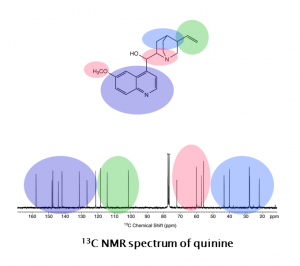
METABOLOMICS
- Metabolic profile determination of biopsies (tissues and organs) or biofluids (serum, urine, amniotic fluid, saliva, tear fluid, etc).
- Analysis of intact tissues and tissue extracts.
- Analysis of the intra- and extracellular profile of cultured eukaryote, prokaryote, or yeast cells.
- Analysis of intact cells and cell extracts.
- Fluxomics studies.
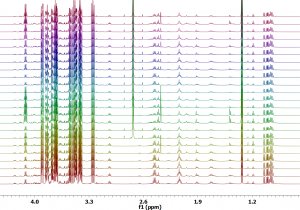
BIOMACROMOLECULES
- The structural study and characterization of biological macromolecules such as peptides, proteins, DNA, and RNA.
- Interaction studies between receptor macromolecules and small chemical compounds (ligands).
- Screening of chemical libraries.
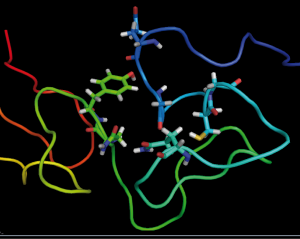
FOOD INDUSTRY & AGRICULTURE
- Analysis of food composition (beverages, milk, oils, flours, animal food, and dietetic complements) to obtain detailed information about the metabolite, lipid, and additive composition.
- Analysis of primary and secondary metabolites, and cell wall components of the stems, leaves, fruits, roots, or seeds of cultured or wild plants.
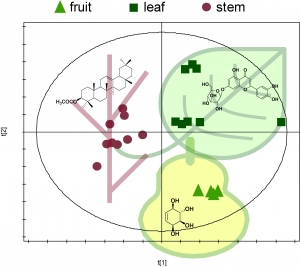
Contact the NMR facility to get started:
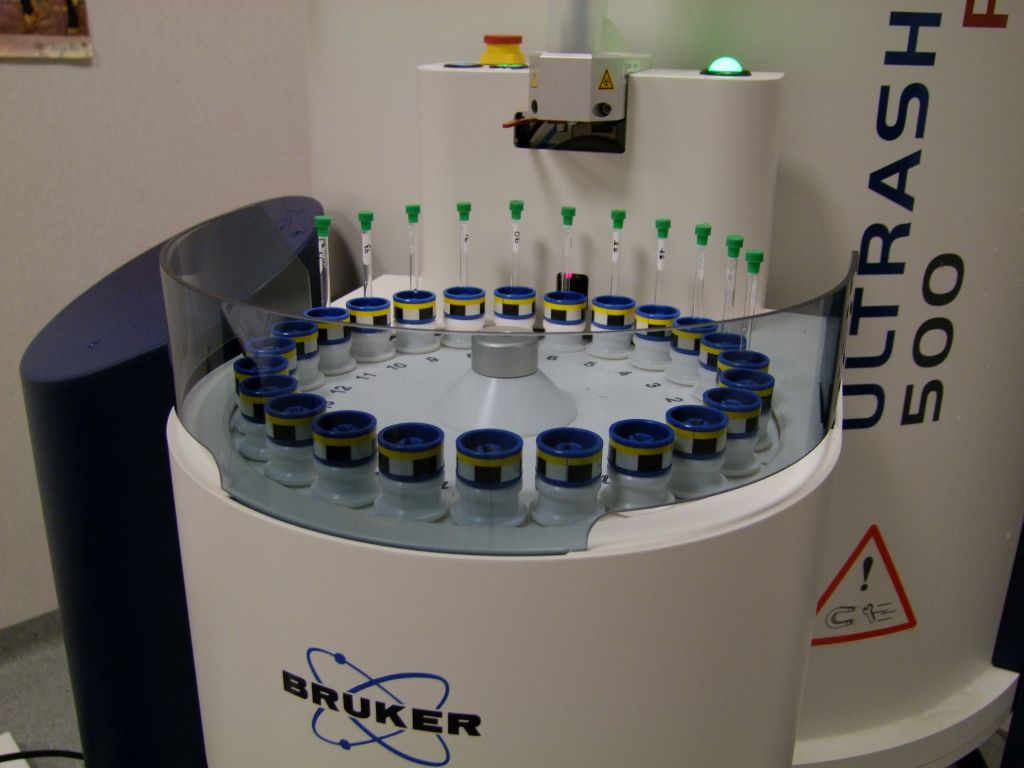
Virginia Rejas
rmn@cipf.es
963289680 ext. 2103

